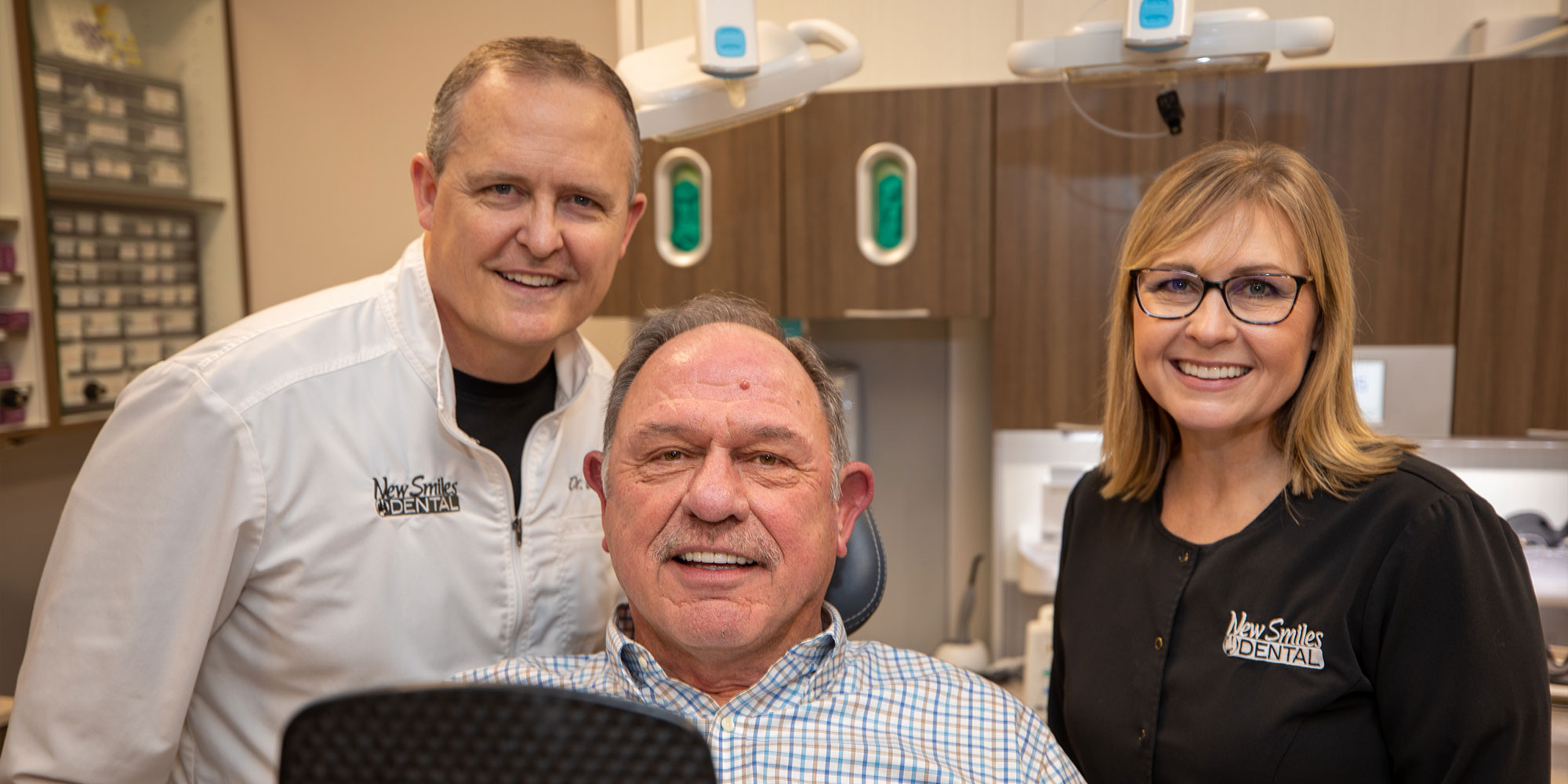
If you’re looking for a dentist near you in Sherwood, OR that offers a full spectrum of dental care for every member of your family, this can be challenging. At New Smiles Dental, we have extensive knowledge and expertise delivering comprehensive, considerate and advanced dentistry to people of all ages. From routine preventive procedures to emergency dentistry, we love delivering clinically outstanding care with a personal approach. Whether you need a tooth filled, your teen has a wisdom tooth that requires extraction or you’re looking for a pediatric dentist for your youngest family member, our dentists go above and beyond to deliver gentle, top-quality family dentistry. When you entrust us with your smile, our team always takes the time to explain procedures and discuss ways to take care of your oral health at home. Our family dentist offers exceptional dental services at highly competitive prices and we accept insurance from multiple carriers to make getting excellent dental care for your entire family even more affordable.

From routine teeth cleanings and digital X-rays to oral cancer screenings, New Smiles Dental is your go-to practice for preventive dentistry. Our dentist believes in delivering the most conservative treatments to preserve or restore healthy teeth and gums. We encourage you to schedule routine visits twice a year so we can look for early signs of dental decay or disease, provide prompt treatment or prevent these problems altogether.
Our pediatric dentist takes pride in helping children achieve and maintain good oral health with a full range of gentle kids’ dentistry in Sherwood, OR. We encourage you to bring your child to see us by their first birthday to help prevent dental anxiety and encourage them to develop optimal oral hygiene habits when they’re young. Our skilled dentist offers compassionate pediatric dental care, including regular exams, cleanings, digital X-rays, fluoride treatment, fillings and sealants. According to studies, sealants reduce the risk of decay by nearly 80% in a child’s molars, so we recommend them in children ages 6 to 12.
We understand accidents happen and teeth are especially vulnerable to trauma in young children. In addition, uncomfortable nerve pain can develop seemingly overnight in adults of all ages. Our team does everything possible to schedule same- or next-day appointments because we don’t want to see anyone suffer. Whether you broke a restoration, your child knocked out a tooth on the playground or a family member has any other dental emergency, we’re here to relieve pain and restore our patients’ oral health!
In addition to alleviating dental fear, sedation dentistry makes it easier to withstand longer treatment sessions, so procedures that typically require multiple visits can be performed quicker. Nitrous oxide is the mildest type of sedation and safe even for children, as long as it’s administered by a trained pediatric dentist. We’ll discuss available options and help you make an informed decision about the best type to meet your needs.
Whether you have a weakened, broken or missing tooth, we offer customized crowns and bridges in Sherwood, OR to restore your smile. Dental crowns are fixed caps that cover teeth too damaged or decayed to be treated with bonding or composite fillings. Crowns are also needed after a root canal procedure to protect the weakened tooth structure. A dental bridge spans the empty space a missing tooth creates and attaches to modified and crowned natural teeth on either side.
Tooth decay is a common oral health problem affecting people of all ages, from the first primary tooth through all stages of life. It’s important to fill cavities early to prevent the need for more extensive services like root canals and dental implants. Composite fillings are a tooth-colored alternative to traditional amalgam fillings that restore strength and aesthetics after decay is removed.
A tooth extraction may be necessary when a tooth has sustained extensive damage or decay, can’t be saved with root canal therapy or in preparation for a dental implant. In some cases, a tooth is extracted to make space in the mouth for orthodontic treatment or to allow room for adult teeth to grow in properly. Regardless of the reason, Dr. Doyel and Dr. Aanderud has the skills and expertise to ensure your procedure is comfortable and safe. Our dentist also has experience extracting wisdom teeth (third molars) that are impacted and may require surgical extraction and sedation.
A root canal is a proven method for treating tooth pulp that is inflamed or infected and saving the tooth. If left untreated, the infection can cause severe pain and/or lead to an abscessed tooth. While the myth persists that root canals are painful, advances in dental technology have resulted in root canals that are no more uncomfortable than having a cavity filled. After undergoing a root canal, a customized natural-looking crown is required to prevent fracturing and maintain tooth function and aesthetics.
Personalized cosmetic dental treatments at New Smiles Dental provide renewed smile beauty, a boost in self-confidence and improved oral health. Our dentist is skilled in delivering a wide range of cosmetic dentistry services customized to your unique needs, including inlays, onlays, composite bonding, teeth whitening and porcelain veneers.
Do you snore at night, awaken in the morning and feel fatigued even after sleeping through the night? If so, you may have obstructive sleep apnea (OSA), a condition impacting 6–13% of adults in the U.S. For mild to moderate OSA, we can create a custom-made mouth guard to fit the shape of your teeth and mouth to help alleviate this problem. This simple treatment will enable more restful sleep for you and your partner!
If you wake up with a sore jaw or achy jaw muscles, you might be clenching and grinding your teeth at night. Known as bruxism, this common issue can damage your teeth and the TMJ, which connects your lower jaw to your skull. This can lead to TMJ-related jaw pain and chronic headaches. A custom mouth guard helps reestablish a comfortable relationship between your bite, TMJ and the muscles that move your jaw.

At our family dentist practice in Sherwood, OR, our entire team looks forward to getting to know you and your family. We want all your family members to feel at home when they visit us, so we deliver care in a warm and welcoming setting. We also believe that open communication about costs and procedures goes a long way to building trust. While we encourage all our patients to follow proper oral hygiene habits at home, it’s important to schedule regular checkups and professional cleanings. Your smile is uniquely yours and we’re committed to helping you maintain its beauty and function for life. If you’re looking for a trustworthy, experienced family dentist dedicated to delivering exceptional and caring dentistry, you’ve come to the right practice!
